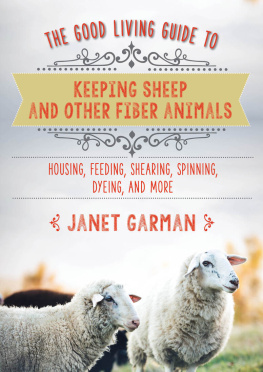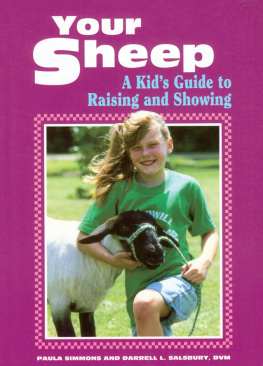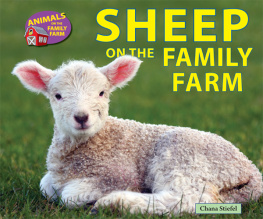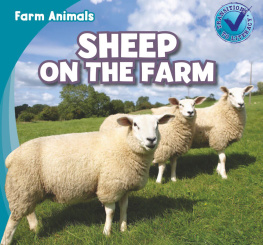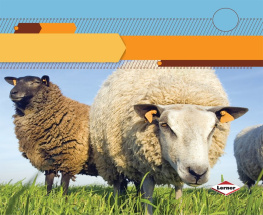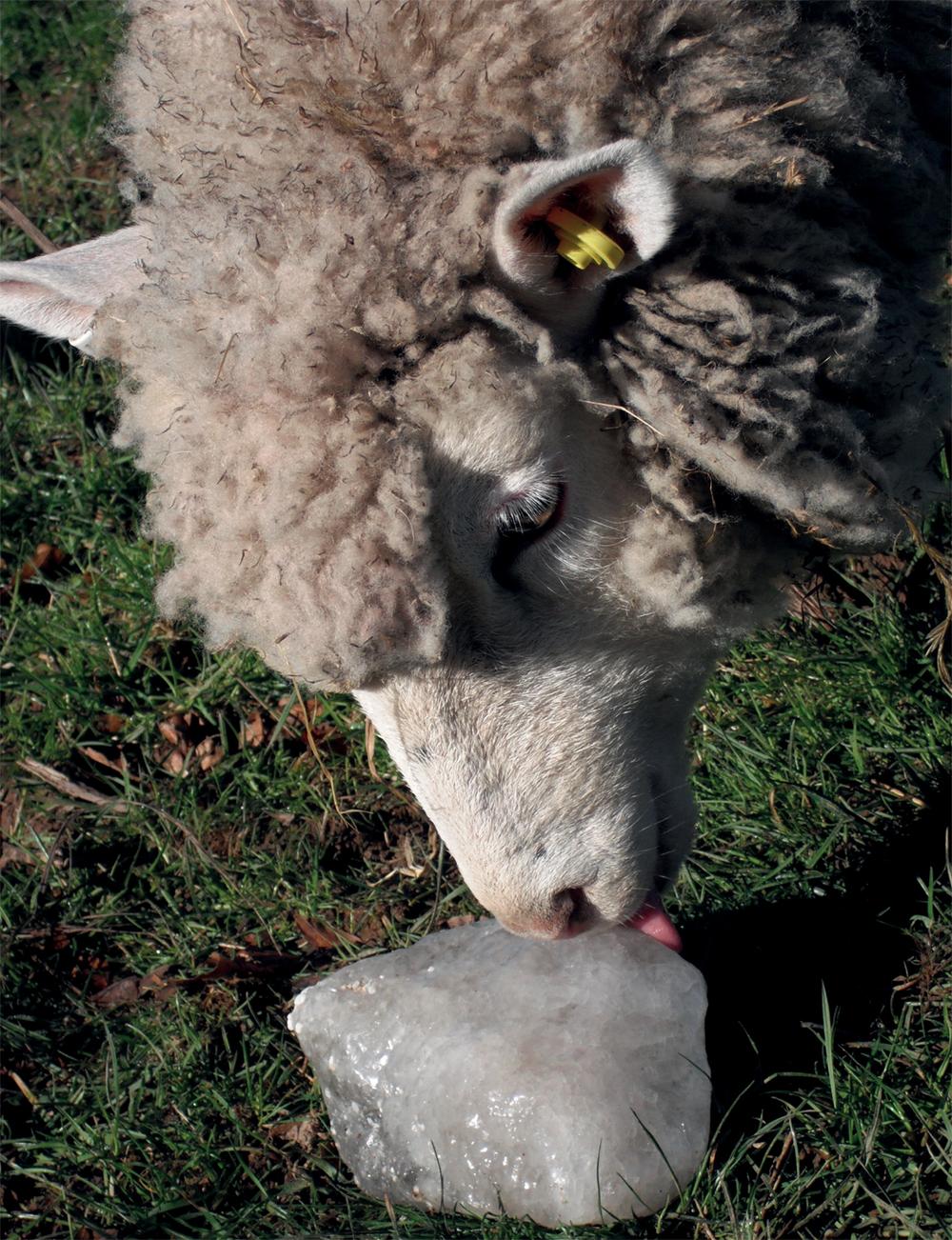
First published in 1998 by
The Crowood Press Ltd
Ramsbury, Marlborough
Wiltshire SN8 2HR
www.crowood.com
Paperback edition 2012
This e-book first published in 2013
Kim Cardell 1998 and 2012
All rights reserved. No part of this publication may be reproduced or transmitted in any form or by any means, electrical or mechanical, including photocopy, without permission in writing from the publishers.
British Library Cataloguing-in-Publication Data
A catalogue reference for this book is available from the British Library.
ISBN 978 1 84797 586 7
Illustrations by Tony Phillips-Smith.
Photographs by Fiona Teagle and Kim Cardell.
Dedication
To my late parents Peggy and Willmar Cardell, who knew a thing or two about sheep, and to my brother Peter who knows even more.
Acknowledgements
Grateful thanks to the following friends and colleagues who have contributed in so many ways to the production of this book by reading manuscripts, supplying information, and offering comments, advice and encouragement. They are all stalwarts of the sheep industry.
Roger Ash; The British Wool Marketing Board; David Croston, BSc; Alastair Dymond; Ron Harrison, BSc; Cath Hoyland, BSc; Richard Janes, BSc (Animal Sciences); Peter Johnson; Tony Phillips-Smith; Mike Prettejohn, MRCVS (former president of the Sheep Veterinary Society); David Sullivan; Ian Wilkinson; Robin Hill; and Fiona and Peter Teagle.
Contents
The environment, animal welfare and climate change have become major global issues since this book was first published. But, although the sheep industry has been affected by them, it has not been radically changed as a result. This is largely because global sheep farming remains a mix of subsistence, pastoral and high-tech and, while embracing the twenty-first century, it retains its proud traditions. Sheep must have shepherds and must depend on Man, while Man still depends on them.
However, one phenomenon of the last decade that has touched on the industry is the Internet. Advice and facts about every aspect of worldwide sheep keeping are at the end of a computer key. We can now surf for all the information practical, academic or quirky that we could ever need.
The missing element is the sheep. This book is intended to be an introduction to the practical side of sheep keeping and to provide a framework which allows small flocks as small flocks often do to grow into larger flocks.
The keyword is framework. Unlike the Internet, no book is big enough to include every detail of sheep management ; but it can set out the fundamentals of what is involved. Anything additional or more advanced will be somewhere at the end of that computer key.
Flock Facts
| Life-span | Sheep can live for 20 years. |
| Breeding span | Average span in a commercial flock is 5 years. More than 10 years in a small flock. |
| Breeding frequency | Normally once a year. Some breeds capable of breeding every 8 months. |
| Gestation period | Average 147 days. |
| Breeding age | Rams able to serve at 45 months. Some ewes will breed at 8 months and lamb at 1314 months. |
| How many rams | Three adult rams per 100 ewes. One ram lamb per 20 ewes. |
| Litter size | Hill sheep, one. Lowland sheep, two or three. Four or five not unusual. |
| Birth weight | Average 45kg depending on breed. |
| Milk production | Dairy ewe 350500 litres per lactation. Commercial ewe 2 litres per day. |
| Wool weight | Average 24 kg fleece per year. 710kg from Longwools. |
| Growth rate | Can average 1.52kg per week. |
| Age fully grown | Usually 18 months to 2 years. |
Age of lamb when
sold for meat | 312 months (average 48 months) and weighing 3545kg. |
| Replacement rate | Average 20 per cent. That is, in a flock of 100 ewes, 20 are culled and replaced each year. Lower in a small flock. |
| These figures are averages from a wide range of facts, figures and breeds. |

Sheep are a full-time responsibility and need hands-on attention much of it physically hard.
A small flock must be managed as professionally as a large commercial flock. Not only does common sense demand it, but the law demands it too. Sheep are very vulnerable to neglect and ignorance. They demand good stockmanship as summed up in the Five Freedoms of animal welfare:
- Freedom from hunger and thirst.
- Freedom from discomfort.
- Freedom from pain, injury or disease.
- Freedom from fear or distress.
- Freedom to express normal behaviour.
So, the questions to ask before establishing a flock are:
- Do I have time to keep a daily watch on them?
- Do I have time to sort out any problems when they occur?
- Do I have a source of advice?
- Am I physically fit to handle sheep?
- Is there help in an emergency?
- Do I have land which is suitable for sheep?
- Can I afford to invest in the basic essentials?
- Can I afford to keep them until they start paying their way?
- Can I accept that they will eventually be sold or slaughtered?
- Do I know the legislation affecting the industry?
- Can I cope with the form-filling and bureaucracy?
Setting up a flock can be plagued by red tape. In the UK and some other countries it is compulsory to:
- Register a flock, even if it consists of one pet sheep.
- Complete Movement Forms before moving sheep to the premises and record all sheep movements on and off the property thereafter.
- Register the premises where the sheep are to be kept.
- Identify the sheep with official tags.
- Keep a Holding Register.
- Record the use of all medicines.
Most of this paperwork needs to be up and running before buying any sheep. Sources of advice and websites for up-to-date information and legislation are included in the Appendix.
For those who can cope with red tape, producers in Europe can also sign up for the Single Payment Scheme, which is the main agricultural subsidy scheme. It is not compulsory, but those joining it will need to adhere to certain requirements in order to receive payments. The requirements usually reflect current laws and good agricultural practice.
Sheep farmers may also have access to grants for countryside conservation schemes and production systems such as organic.
Climate Change
New management and production controls may be introduced into the sheep industry as the issue of climate change is addressed. Sheep produce and emit methane and carbon dioxide through belching and flatulence . Both are end products of rumen fermentation, both are useless to the animal and both are implicated in climate change.


